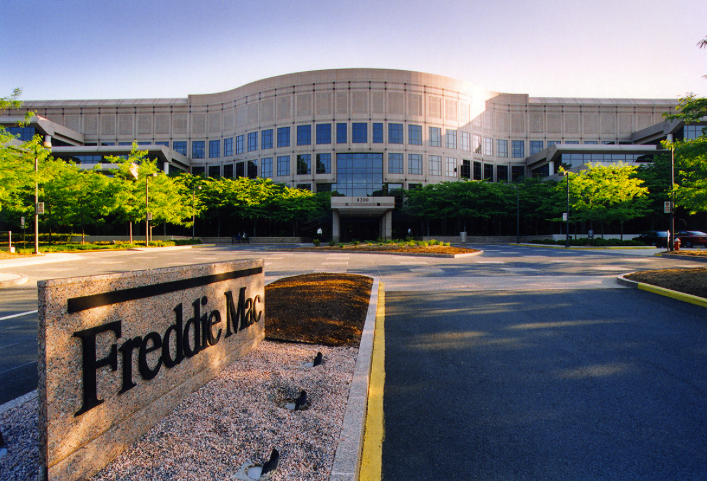Thanks to Freddie Mac, low- and moderate-income homebuyers now have more financing options when buying a manufactured home.
Freddie Mac introduced CHOICEHome in November 2018, a two-year pilot program that treats mortgages secured by manufactured housing just like those secured by site-built single family residences (SFRs).
The CHOICEHome program is part of a larger Freddie Mac initiative which aims to increase access to low- and moderate-income housing in underserved markets, called Duty to Serve. Manufactured housing is typically less expensive than traditional, site-built homes. The initiative specifically targets:
- rural housing;
- manufactured housing; and
- the preservation of existing affordable housing.
Freddie Mac designed CHOICEHome keeping in mind the issues low- and moderate-income homebuyers face. For one, manufactured homes pose a greater risk for lenders, leading to higher interest rates and larger down payment requirements. These obstacles bar many would-be homeowners from qualifying for financing programs.
Others encounter problems managing closing fees. This happens when a homebuyer needs to close on financing for construction as well as the home itself. Homebuyers shopping for manufactured housing also have to contend with appraisals for the home and the land. This creates a costly and confusing closing process.
How does CHOICEHome work?
CHOICEHome treats mortgages for manufactured homes titled as real estate like those for traditional site-built SFRs. When a manufactured home is certified by CHOICEHome, the property becomes eligible for many Freddie Mac conventional mortgage products, including HomeOne, Home Possible and construction conversion mortgages.
To gain CHOICEHome certification, lenders need to show the manufactured home meets the Department of Housing and Urban Development (HUD)’s construction, installation and setup standards and that the home is situated on land owned by the homebuyer. Lenders also need to follow local and state laws for titling the manufactured home as real estate.
CHOICEHome seeks to attract homebuyers who would not normally consider a manufactured home by requiring some features of traditional site-built SFRs in this new type of manufactured housing before certifying it as a CHOICEHome. These features include:
- higher pitch roof lines;
- lower profile foundations;
- drywall throughout;
- energy-efficient features; and
- garages and carports.
In addition to a more traditional aesthetic, attractive financing options like a 3% minimum down payment are available for their Home Possible and HomeOne mortgage products.
Additionally, by allowing buyers of manufactured homes to finance the purchase and construction of a home through single-close financing, buyers only pay one set of closing costs.
The program streamlines the appraisal process as well. With CHOICEHome, appraisers will be able to use traditional site-built homes as comparables when no other CHOICEHome sales are available. Providing for a single closing also avoids the need for multiple appraisals.

How will CHOICEHome impact California’s real estate market?
The program is designed to help close the housing affordability gap in America, a welcome goal given California is home to the nation’s least affordable rents.
Turning renters into homeowners by extending attractive financing options to homes for low- and moderate-income Californians is a winning strategy for local governments and homebuyers, especially considering its long-term benefits. Manufactured homes appreciate in value similarly to traditional site-built homes, according to a 2018 Federal Housing Finance Agency (FHFA) report.
Freddie Mac isn’t the only government-sponsored enterprise (GSE) that thinks manufactured housing can help ease the housing crisis. Fannie Mae rolled out a similar program earlier in 2018 with MH Advantage. This program also offers conventional financing for manufactured housing with many of the same features of a site-built home.
Although it’s too early to draw any definite conclusions from these pilot programs, Freddie Mac expects the supply of manufactured housing to surge given the availability of this new financing option. They anticipate demand for these homes from Millennial first-time homebuyers, Baby Boomers and empty nesters looking to downsize and homebuyers with limited financial resources.
Before Californians can start seeing results, CHOICEHome and MH Advantage need to clear some tough hurdles. These programs face stringent zoning regulations and vocal not-in-my-backyard (NIMBY) advocates who wish to avoid the stigma of manufactured homes.
Even without those obstacles, Fannie and Freddie’s new manufactured housing financing programs are unlikely to help the densely populated areas most in need of relief. Manufactured housing simply can’t match the density and value multifamily residences offer cities.
There is no single antidote for California’s housing crisis, but policy that adds and preserves low- and moderate-income housing in underserved markets is a step in the right direction.
Agents—do you think CHOICEHome and MH Advantage will make a difference for your clients? Leave your thoughts in the comments below.















Yes sounds like a big step forward. Especially in the case of a manufactured home on a permanent foundation, there should be no difference in loans.
Major step forward, particularly the appraisal guidelines. I am a Builder and MH Dealer. This will be an immense help to my business. Long overdue!